#saint talismans
Text
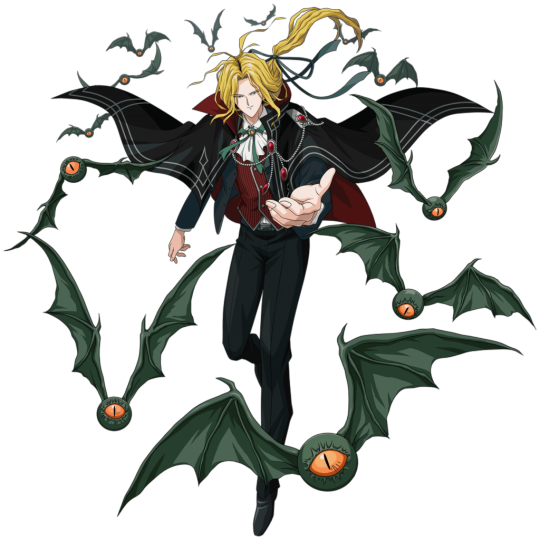
A Happy Halloween from Karasu 🎃
May you die in peace🤣
Karasu's voice actor is the amazing Ryō Horikawa. Please, read other Halloween stories from the "Yu Yu Hakusho 100% Maji Battle":
Chase the Missing Pumpkins
A Grumpy Halloween
A Costume Demon Feast
I hope everyone has a great Halloween!
In the 100% Maji Battle game, the Halloween costumes are called:
Kurama: Exorcist costume (祓魔師の装)
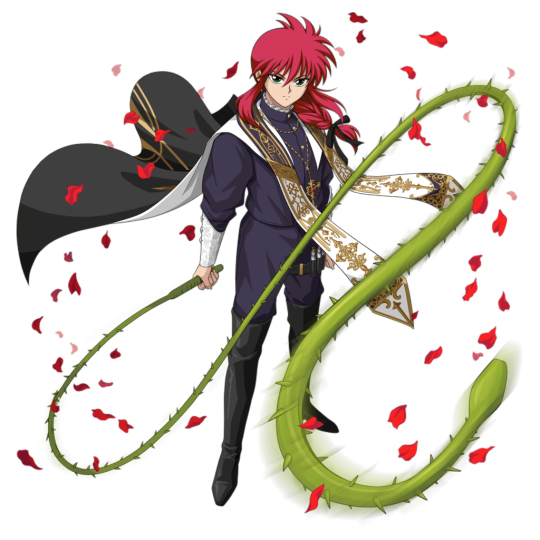
Karasu: Immortal King costume (不死王の装)

Yukina: Saint (or holy woman) costume (聖女の装)
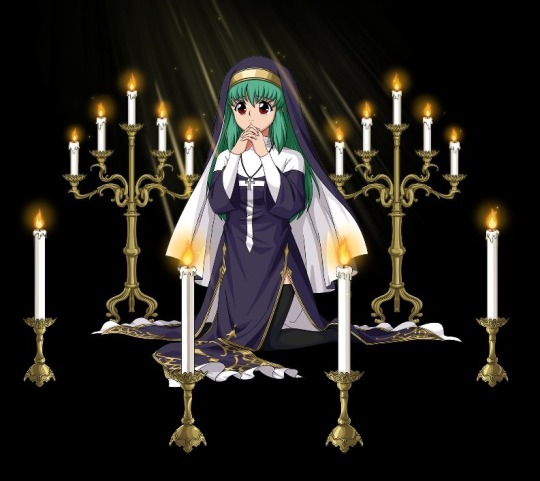
Botan: Talisman (mayoke) costume (魔除けの装)

Kazuma Kuwabara: Pirate costume (海賊の装)

Hiei: Corpse Swordsman (shikabane kenshi) costume (屍剣士の装)


Mukuro: Youma costume (妖魔の装)
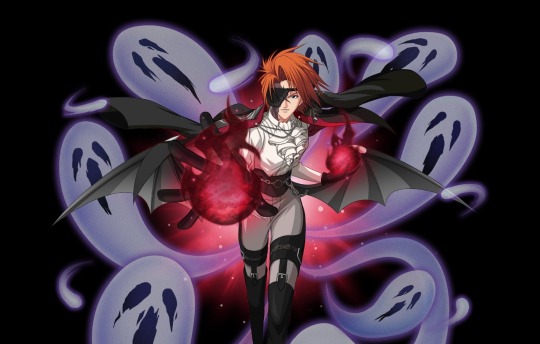

Shinobu Sensui: Devil Warrior costume (魔戦士の装)

Yusuke Urameshi: Werewolf costume (狼男の装)


#Karasu#Yu Yu Hakusho 100% Major Battle#Halloween#Ryō Horikawa#Exorcist Kurama#Immortal King Karasu#Saint Yukina#Talisman Botan#Pirate Kuwabara#Corpse Swordsman Hiei#Youma Mukuro#Devil Warrior Sensui#Werewolf Yusuke
51 notes
·
View notes
Photo
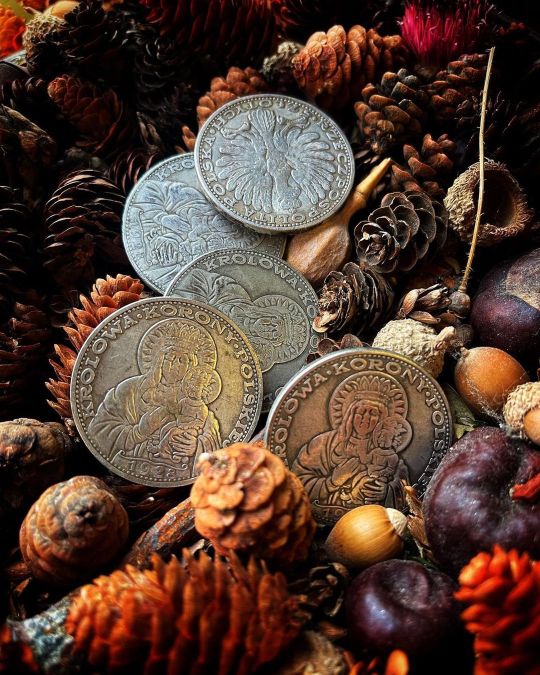
Black Madonna Coin // Perfect for your #Altar or #Shrine. Her image Our Lady of Częstochowa juxtaposes several ideals of #womanhood: a powerful heavenly #queen, a suffering #mother, a perfect nurturer, the scars a sign of suffering she shares with her worshippers. ~ Trochimczyk . Obtain at #TheWitchery via https://www.thewitchery.ca/product/black-madonna-coin/ Black Madonna of Częstochowa will hear the calls of those with depression, one who is searching to fill the void, folks with #fertility & menstruation issues, & people that need her guidance. She is a healer & the light at the end of a dark tunnel although she appears blackened & burned by fire she is filled with answers. The legend concerning the two scars on the Black Madonna’s right cheek is that the Hussites stormed the Pauline monastery in 1430, plundering the sanctuary. Among the items stolen was the icon. After putting it in their wagon, the Hussites tried to get away but their horses refused to move. They threw the portrait down to the ground & one of the plunderers drew his sword upon the image & inflicted two deep strikes. When they tried to inflict a third strike, he fell to the ground & writhed in agony until his death. Despite past attempts to repair these scars, they had difficulty in covering up those slashes as the painting was done with tempera infused with diluted wax. In 1928 Walery Cyryl Amrogowicz completed the creation of five & two zloty coins. The Polish Ministry of Treasury rejected his design, but he nonetheless ordered some sets for himself and friends. This beautiful reproduction coin amulet can be used to connect to #BlackMadonna through ritual & mediation work. . . . #blackmadonna #czestochowa #ourladyofczestochowa #ourladyofczęstochowa #witch #healing #witchcraft #witchery #amulets #talismans #devotional #icons #saints #moontime https://www.instagram.com/p/CpSm5GrLgdd/?igshid=NGJjMDIxMWI=
#altar#shrine#womanhood#queen#mother#thewitchery#fertility#blackmadonna#czestochowa#ourladyofczestochowa#ourladyofczęstochowa#witch#healing#witchcraft#witchery#amulets#talismans#devotional#icons#saints#moontime
2 notes
·
View notes
Video
youtube
St. Expedite Talismans for a Magickal Life!
#youtube#St. Expedite#talismans#amulets#magick#magickal life#New Age#witch#hoodoo#witches#witchcraft#Saints#spiritual work#spirits#holy spirit
1 note
·
View note
Photo

The unusual basket, almost a yard wide, is a kaiko-zaru (silkworm basket) and dates to the turn of the century when handspun silk was still a cottage industry... Mr. Saint-Gilles uses it to display his collection of omamori, protective talismans still sold at temples and shrines.
At Home with Japanese Design, 1990
#vintage#vintage interior#1990s#interior design#home decor#90s#entryway#vignette#silkworm basket#candles#bronze#sculpture#plinth#ikebana#omamori#collection#Japanese#style#home#architecture
844 notes
·
View notes
Text
thinking about dagoth ur and some of the corprus infected making their way up red mountain. they bring, on occasion, things of saint nerevar. old temple prayers. old charms/talisman. some iconography. they then apologize--they hadnt remembered to discard the old temple things, they just made their way up without thinking, in a trance.
dagoth ur has them discard them in the heart chamber, before shambling away to spread the blight. and dagoth ur collects them. a sort of shrine. to any other saint or the tribunal he tosses them in the lava, but for nerevar he keeps them. a god with the shrine of a saint he worships in his inner sanctum. he would never admit it, but that is what he does.
he stares at the images and wonders why they are so warped. what the temple has done to nerevar's image. nerevar's splendid body they made into a bone walker? they filed down all of his clever moments to instead make him nothing more than a humble warrior? they dare say he worshiped and respected the false gods of the tribunal?
but in the end these are all he has left. so he cant bring it in him to discard them. he'll keep them... for now.
just until the real thing finally arrives.
70 notes
·
View notes
Text
Dark academia letter inserts ideas
(medieval literature and religion edition)
A bookmark or postcard with an image of a medieval artwork or manuscript page;
A mini-print or sticker of an icon or painting of a female saint or mystic, such as Hildegard of Bingen or Julian of Norwich;
A small packet of incense or a tea bag with a note that refers to the use of incense or herbal teas in medieval religious practices. I'd go for vanilla, cinnamon, or lavender.
A handwritten quote from the book that you recently read and found particularly interesting or inspiring, and/or a personal reflection on how this book has affected your own thinking.
A small charm or talisman, such as a crucifix or a feather.
A mini-zine or booklet that you made, featuring artwork, poetry, or your own reflections.
A small piece of fabric or ribbon that you've hand-dyed using natural dyes, such as madder or indigo, as a nod to the medieval practice of dyeing textiles with natural materials.
A handwritten letter or note on parchment-style paper, sealed with a wax stamp or a piece of washi tape, as a nod to medieval correspondence.
105 notes
·
View notes
Text
One thing I love about living in a relatively secular-to-moderate catholic area is that a lot of people here still have their little saints and talismans inside their cars. Either because they do believe in them or because they got them with their first car from a parent or grandparents.
I just really enjoy the continuity of it, the same saint who once looked after lone travellers on their dangerous journey through the dark forest, protecting their horses from sickness, their rider from robbers and their journey from mishap now looking after a Fiat 500 driving to the next Lidl and making sure the antenna doesn't snap off in the car-wash. It's just...there is love in that, you know?
103 notes
·
View notes
Note
Hi Theitsa! half Greek in America here, looking for translation help and you're the only blogger I know 😭
long story short: my family on my mom's side all practice Greek folk magic, with my great-grandma and(possibly my great aunt)apparently being "completely" a witch.
i grew up with it but i'm still learning the language and my family disowned me for being gay so I can't ask for help with research.
the most commonly used term for "witch" is "magissa"/ μάγισσα right?? is μαγεία more common for magic in general? when I'm using Google translate γητεία seems to be the most common term for folk sorcery.
and i see the practices of Circe referred to as μαγγάνεια??
thank you for your help if you know anything, I know it's a niche topic.
bless you!!!
Hii! Dear anon I'm very sorry for what your family did to you :/ That's nor fair at all! May you thrive and be always blessed in your life!
This topic is not niche, actually! The average Greek in the country has some basic contact and knowledge of such stuff either by doing some or by hearing of them. I haven't talked a lot about Magganeia/Vaskaneia in Greece so let's do a Masterpost!
(Greeks with deeper knowledge please add to this post and let me know if something is inaccurate! All I have is "average Greek" knowledge but well, someone has to make the start.)
People throughout Greece (as in the whole Balkans and the Middle East tbh) practice a lot of customs to bring good energy and good things to them or expel bad energies and bad things. The most prevalent being the ritual of xematiasma (the prayer for which needs to be passed down by the opposite sex on a full moon), or customs with bridal koufeta for young girls to attract a good groom, reading the coffee and the palm, explaining dreams (and having recorded oneirokrites), giving new year talismans for good luck (mati beads, pomegranate charms, horseshoes) and hanging them around the home, or baking a pie to St. Fanourios if you want to find something you lost etc etc.
Traditionally such practices in Greece are intertwined with local customs and herb knowledge and it's not a big "issue" like it would be for USAmerican (cultural or practicing) Evangelicals. In Greece it's acceptable to do many things that in the US would be considered "witchcraft" but here they're just "tradition".
For Greeks the basic stuff I mentioned in the first paragraph is widely accepted to the point many of them have fused with church practices through the centuries. Coffee shops where one can have their coffee and palm read - although not many - have lots of customers. Tarot readers also have a good clientele. I've heard Greeks dismiss such stuff as "nonsense" but rarely dismiss them as "evil". Actually, the comments about such practices being evil here are very tame and usually connected to the church - but not in the US way.
Our Church might have cried about such practices in the past but... who listens to the church on these things! :P (only a few do) Our insistence on keeping folk practice led to Greece having no witch hunts or any witches burnt for at least a thousand years now!

Map of witchhunts in early modern Europe (source)
There is a line here, too, of course. Like, if one uses a heart from a mouse wrapped in an oak leaf bathed in frog bile to expel the bad spirits (a spell I just made up) that's officially "witchcraft" and we find it weird at best. More mild stuff like burning wishes written on paper or letting garlic absorb bad energies and then burn it are middle ground and not outright condemned - I feel the Greeks have a great tolerance of what is considered "folk tradition" to them.
The fear of being "pagan" in recent centuries is a Western panic. Traditionally Greeks and their Church were most worried about harmful spells (which included harming an animal or human in the process) and calling demons to do your bidding. If you called a saint for help in a non-harming spell... hmm that wouldn't be that worrying I guess. As long as you didn't ask a priest's opinion, you'd be fine :P
The sum of acceptable and unacceptable practices by the Greek public can be called "μαγγανεία" or "βασκανεία". Because they include unacceptable practices as well, the words have a negative connotation.

"Μαγεία" for Greeks is connected more to the Western archetype of a wizard with a tall hat going around with a big rod shouting "abracadabra". It's connected more to fantasy and fairytales. Traditionally I don't think we used μάγος/μάγισσα for people who did such practices. Even today I've yet to hear Greeks who call themselves witches say "κάνω μαγικά".
I'd say μαγγανεία or βασκανεία are the appropriate terms for what your great-grandma practiced. The spells are traditionally called γητείες (sing. γητεία). The word γόης which now means "very charming man" meant "sorcerer" in ancient years. We just use it metaphorically today. These words all have the same linguistic root.
Nowadays I haven't heard men call themselves "μάγος" but some women call themselves "μάγισσα", and they do "ξόρκια" (comes from εξορκισμός, exorcism - the English version of the Greek word). I think "μάγισσες" practice more Western types of magic because they learned the spells from Western European or US books and videos. I don't know if a practicer of Greek folk spells would be called the same.
I must note that all the above is the reason why when USAmericans practice Greek customs to worship the Greek gods and call themselves "pagans" feels a bit unsettling to me. I suppose if you add crystal balls and tarot and crystals to the practice that would shift it more to the "witchy" side (although as a Greek I'm quite flexible :P) But more than once I've seen USians call themselves "pagans" for simple acts of worship which are very much non-pagan. Having a home altar with the gods along with some blessed items and candles burning... is Basic Christian Orthodox stuff too, a tradition unbroken from ancient years (εικονοστάσια με καντήλια, κεριά, λουλούδια, κομποσκοίνια).
At the same time, I understand that in their society this can be called "being pagan" so I'm not saying that my view is the only one that matters in this. But some knowledge of the Greek culture always helps if you're practicing its customs. It will also help the Westerners stop calling Orthodoxes "savage pagans" for our religious practices after a thousand years :))))
Thanks for making it this far! Get a small bonus: a great article on ancient Greek "bindings/wishes" which is in Greek and it will be probably still fine if translated through Google.
Some things might differ between areas and eras so that's why I welcome other Greeks to comment here with their own experiences and stories of "witches" (or whatever they called them) if their areas had any.
21 notes
·
View notes
Text
I’m back with more European folk magic! This time we’re diving into Italian folk magic practices. This isn’t a comprehensive look at Italian magic (though if you’re interested in an overview I’d be happy to write one) rather it’s a close look at a particular protective charm from southern Italy. It’s a simple, yet effective charm with a long history. Everything is thoroughly researched through academic sources in anthropology, folklore, and first hand accounts. You can either click the link or read this post, either way I hope this is meaningful and educational for you🌛🌝🌜
Brevi: an Italian folk magic charm against the evil eye and how to make your own
Like many Mediterraneans, Italians are greatly concerned with the potential to be afflicted with the evil eye. Many of the folk magic practices performed by jana and benedettihealers are intended to divine the cause of the malocchio and rid it from those who come to them. Their craft has been passed down for generations and their services are highly respected. Like with other folk magic healers, most jana and benedetti do not consider themselves witches, instead they see themselves as “having the sign”, people chosen by god to help others. Clients come to them for a variety of needs both physical and spiritual. These healers perform divination rituals, locate lost objects, make love charms, and more — though mostly, they remedy the malocchio.
Remedies range from complex, lengthy multi-step rituals, to simple prayers and gestures. Whatever means a cunning person uses varies from region to region, though in Basilicata/ Lucania where my family comes from, the evil eye is typically cured and prevented with brevi. These are small black cloth pouches filled with various sacred herbs, protective amulets and stones, objects made of iron, images of saints, and Palm Sunday ashes. These bags are worn close to the skin, either around the neck, tucked into a bra, or in a wallet. Contact with the skin is considered to be an important part of this protective charm, depending on the region and advice of the healer. Though brevi are typically prepared and empowered by the prayers of the healer, it is not uncommon for mothers to make them for their children.
What goes into the brevi bag is highly subjective and personal, though there are commonalities in their contents from state to state. Medals of the Madonna, a small cross or charm, and rosemary are common in most places. There are more specific additions such as the cimaruta, the cornicello, the mano cornuta and mano fica, or pieces of coral. The cimaruta is a popular Neopolitan talisman typically worn around the neck or hung above an infant’s bed. Made of silver, the cimaruta is meant to resemble a sprig of rue, one of the most sacred herbs. Each of the 3 rue branches blossom into protective magical symbols. These include, but are not limited to: a crescent moon, the sun, a heart shaped key, a sacred heart, a fish, or a rooster.

Charm available: on Etsy White Peach Cottage.
[Image description: A typical silver cimaruta charm. Made to resemble a sprig of rue, the branches end in protective symbols. This particular pendant features a cross, a crescent moon, a sacred heart, and a rooster.]
Along with medals of saints, the cornicello, mano cornuta and mano fica can be added to brevi bags. The corno is a popular Southern Italian amulet, symbolic of a ram or bull’s horn. It signifies virility and strength, projecting a masculine energy. These charms are typically made of silver, gold, or coral, all are considered significant sacred materials. The red coral is reminiscent of blood and vitality, bringing luck to the wearer and silver has long been used as a protective measure against evil spirits. The cornicello is typically worn by men. Mano charms have ancient origins — dating back to the Etruscans. Mano fica, the fig hand, is associated with femininity and is thought to have the power to oppose the evil eye. The mano cornuta, the horned hand, has similar roots and meanings to the cornicello, and if done as a physical gesture, it can reflect the malocchio back to whoever cast it.
In addition to the medals, several sacred herbs are utilized. Many of the herbs are associated with Saint John or the Virgin Mary, though if you are a secular witch like me or worship pagan pantheons, you can forgo the Catholic aspects of this charm. Many of the herbs have ancient associations dating back to the classical Roman period, making their meanings highly adaptable. The Romans associated various herbs with Diana (Artemis), Juno (Hera), and Phoebus (Apollo). So it is not difficult to transcribe the correspondences.
The primary herb used in brevi bags is rue. Rue is sometimes referred to as “the herb of grace” and has long been used in blessing water and exorcisms. Rosemary protects against negativity and is used in cleansing rituals. Roses symbolize the divine love of the Madonna and evoke healing energies. Lavender has a long history in Italy of being a prophylactic against evil, with evidence dating back to ancient Rome. Mugwort is associated with witchcraft and magic, mostly in connection with Artemis/ Diana and the moon. Some brevi contain chili pepper seeds — the fruit itself resembles the cornicello, carrying a similar meaning. The seeds are associated with protecting and warding.
Once the charms and herbs are chosen and brevi are assembled, cunning folk recite prayers and bless the charm. They recite common Catholic prayers 3 times and typically perform these blessings on holy days and Saint feasts such as notte di san Giovanni — St. John’s eve, and Christmas eve. St. John’s eve takes place around the same time as the summer solstice and the celebrations across Europe still have elements that resemble pagan celebrations such as the Roman Vestalia festival. Some healers do not pray over the bag, rather they recite poetry that evokes their intent. The process of making brevi is highly personalized to each healer and region.
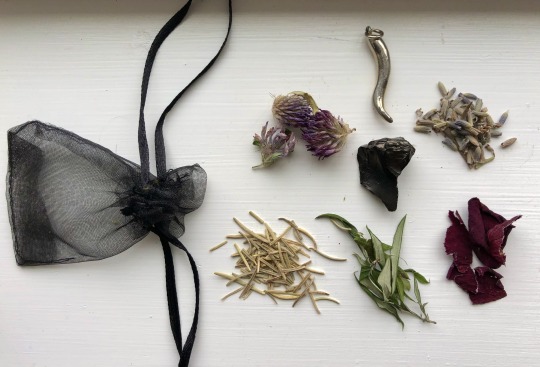
[Image description: author’s personal brevi elements. They include a black sachet, rosemary, mugwort, rose petals, lavender, red clover, obsidian and a white gold cornicello.]
I have adopted and adapted making and carrying a brevi bag into my own practice. It gives me a sense of deeper connection with my ancestors, especially since brevi are a popular folk remedy in the region we come from. In my own brevi rituals I include herbs that are personally meaningful to me with magical correspondences that resonate with my intent. I typically use rosemary, mugwort, rose petals, lavender, and local red clover. Harvesting and foraging some of the herbs brings me closer to nature and makes the bag that much more meaningful. I also include a shard of obsidian which is a powerful warding stone. I like to think its reflective nature is aiming the evil eye back to whoever or whatever is aiming negative intent towards me. I put a family heirloom in my bag as well — my great grandfather’s cornicello, passed down from my father to me. It gives me a sense that my ancestors are protecting me. I write my own personal incantations for my brevi, typically poems or prayers to nature spirits. Finally, I charge it every full moon, imbuing it with magical energy and replace the herbs every so often to keep its power.
Crafting charms and spells can be highly personal and meaningful. Creating your own brevi bag can invite in positive energies, bolster spiritual defenses, and connect you to a long history of spiritual healing. Brevi bags are a low effort, simple way of practicing magic, making them highly accessible. I hope you found this interesting and perhaps you’ll choose to incorporate brevi bags into your magical workings.
(sources available at the end of linked article)
#italian folk magic#italian witchcraft#folk magic#folk healing#witchblr#witchcraft#witch#eclectic witch#witches of tumblr#beginner witch#protection spell#grimoire#book of shadows#baby witch#malocchio#evil eye#warding spell#protection magic#pagan#paganism#wicca#eclectic wicca#italian culture#stregoneria#streghe#stregheria#benedicaria
270 notes
·
View notes
Note
im a third-generation italian-american looking to get into traditional italian magic. my family are devout catholic, so i wouldn't be able to ask them. where do you recommend i start?
Hello love thank you for the question. I think its great that you want to begin this journey, it will be a bit challenging if your parents are not a fan of witchcraft/magic so here are ways to delve into this subject on your own. Here are some steps to get you started:
How to begin your journey into learning about traditional italian magick
Research Italian Folklore and Folk Magic: Familiarize yourself with the rich folklore and magical traditions of Italy. Look for books, online resources, and academic studies that delve into the topic. Some key areas to explore include the Benandanti, Stregoneria, and the practices of the Mezzadria.
Connect with Italian Folk Magic Communities: Seek out online communities, forums, or social media groups focused on Italian folk magic. Engaging with like-minded individuals who share a passion for Italian traditions can provide valuable insights, resources, and guidance.
Study Italian Catholicism: As your family follows Catholicism, understanding the religious and spiritual practices within this tradition can offer a foundation for exploring Italian magic. Look into saints, rituals, and devotions that are specific to Italy, as they often have intertwining elements with folk magic.
Learn about Saints and Folk Traditions: Italian folk magic often incorporates the veneration of saints and the belief in their intercession. Research saints that are particularly revered in Italian culture, such as Saint Anthony, Saint Lucy, or Saint Joseph. Learn about their stories, symbols, and associated rituals or prayers.
Explore Magical Objects and Practices: Italian folk magic involves the use of certain objects and practices. Look into items like the cornicello (horn-shaped amulet), malocchio (evil eye), or charms known as "cimaruta." Additionally, explore divination practices like reading coffee grounds (tasseography) or playing cards (cartomancy).
Experiment with Kitchen Witchery: Traditional Italian magic often involves practices related to the home and kitchen. Explore herbalism, folk remedies, and the magical properties of Italian culinary ingredients. Experiment with making your own herbal preparations or creating talismans related to food and household items.
Consider Seeking a Mentor: If possible, try to find an experienced practitioner of Italian folk magic who can serve as a mentor. They can provide guidance, teach you specific practices, and help you deepen your understanding of the tradition.
Remember, it's important to approach these practices with respect and a genuine desire to learn. Take your time, be open to new experiences, and trust your intuition as you explore the magical traditions of your Italian heritage.
#ask#question#witchblr#witchcore#witchcraft#witchlife#white witch#beginner witch#witch tips#grimoire#spirituality#book of shadows#italian folk magic#italian folk magick#italian witch#italian witchcraft
60 notes
·
View notes
Text
red salvias | vampire x knight!reader

(yandere?vampire x gn!knight!reader)
red salvia: A vibrant red flower, member of the mint family which symbolizes deep love, sacrifice and transformation. forever mine.
✎ summary: you finally manage to pass through all the different spell barriers and seals placed on the ruins of a castle and find yourself with quite a peculiar prisoner.
✎ tw: pet names, apart from that it’s pretty sfw.
_(:3 」∠)_
With one last swipe of your Saint sword, the talisman placed centuries ago on the wooden door in front of you, was cut cleanly in half.
A sigh escaped your lips, the blade sliding into it’s sheathe, and your gloved hands grabbed ahold of the rusted doorknob.
You weren’t here because you wanted, no, far from it, yet they had assigned you to a rescue mission. A useless one from the looks of it, because the person trapped there had been imprisoned for more than two hundred years. So the least you could do there is pick up some belongings and check the area.
Getting rid of the spells weren’t much work either, seeing how they were basically withering to dust, an easy task.
However, a fully living, breathing human being isn’t what you expected to see when you opened the door.
How strange.
Maybe he had entered the room beforehand? No, that couldn’t possibly be it, there were seals preventing such a thing.
He stood in the middle of a circular room. Instead of walls, it had shelves full of books of every kind, a window being the only source of illumination, apart from the many wax candles littering the floors.
Crimson eyes finally noticed your body of armor and even lit up at the sight of you, dropping the book he was reading on the floor.
“You finally came, I’ve been waiting for you.” Black locks of hair swayed behind him as he walked to you, scanning your figure with curiosity.
“..?” You were confused; why?
“Oh, my apologies, I’ve just been here for so long. You see, I was trapped here forcibly, even though I’ve never hurt a soul…” The vampire slyly dawned upon you, looking at you with the most innocent eyes.
Won’t you believe him?
“How much of a fool do you think I am? You’re a vampire.” You scrunched up your nose, and your hand reached for your sword. Rescue mission? What a disgusting lie you were tricked into believing.
His hand did not let you get out your weapon, instead forcing it to stay still in his grasp. He felt much stronger than you, even though you were taller than him.
“Well, my features do scream out ‘bloodsucker’, so I suppose you are right. But I haven’t introduced myself, how do you know if I’m really dangerous, dear? I haven’t done anything to you yet.” His smile revealed pearly sharp fangs, there was no denying he wasn’t human.
“You can call me Amias, darling~”
“Remove your hand from my arm-” Amias interrupted your order, instead giving you one of his own.
“Sit down.” His face looks cold for a split second before he smiles cheerfully once again. But for some reason, your body did obey what he said, and you were pushed into a leather chair.
“Good, very good! How your body reacted means it’s already working.”
You frowned, “what are you doing?”
“Hasn’t anyone told you never to look into a vampire’s eyes? One must wonder why~” Amias chuckled, forcing you by the chin to stare into the swirling pool of crimson red in his eyes. It finally dawned why he could command you so easily.
Before trying to stand up, he had already push you down and sat on your lap.
“I won’t hurt you, pet, I just need to gain back my strength. I give you my eternal gratitude for rescuing me, I really don’t know how much more I’d last if you hadn’t come.” His nails touched the skin on your cheeks, caressing it almost with care.
You could feel yourself losing control of your thoughts the more you slipped into his grasp.
“That’s right… let your new master guide you, my beautiful knight.”
He sank his fangs into your neck, fingers interlacing with your hair, and fed off of you. Once finished, he wiped the blood off the corners of his tinted lips.
“Forever mine~”

~ a/n: so…. part two? only if you want to. I hope you enjoyed it! I feel like it’s a bit rusty because I’ve not written in so long. It also feels far too short for my liking (rather I was rushing because I was working while writing this), but we’ve finally got it out. until then, dears.
#yandere x reader#yandere x gn reader#x gender neutral reader#yandere#gn reader#x reader#☆ben writes#vampire#vampire x reader#vampire x human
52 notes
·
View notes
Note
Is there anything in French folk magic or French traditional magic about a new home/home protection?
I don't have a specific ritual but ingredients and methods yes!
RURAL FRENCH MAGIC ELEMENTS
You can make crosses to have at the doors! The plants vary according to the regions: houseleek, cross-benites with lavender, immortelles, according to the folk religious holidays however, traditionally it is on dates of specific religious holidays.
We do a fumigation in the home, certainly with prayers, with plants depending on the region: laurel, juniper... we can burn protective plants, make bouquets of them, especially elderberry. All pungent or strong-smelling plants will be protective (elderflower, garlic, hellebore, holly, hawthorn) For protective bouquets: artemisia, foxglove, meadow iris, mint, St. John's wort, walnut branches, fern, verbena, the Queen of french witchcraft.
We can do a ritual where we will pass the plant through the fire to strengthen its power. The cross is the ideal symbol. The perfect day will be Saint John's Day.
Be sure I'll return to you if I find anything else out! Finally if you need a spell to banish negativity from the house I can give you one by messenger too!
HORSHOE
I think a horseshoe would be ideal ( just like garlic). It is not ''french trad craft'', just a method I would use, but I would purify it, dedicate it to the 4 elements, fumigate it, then recite by hanging it or nailing it:
''Vigilavi, et factus sum sicut passer solitarius in tecto'' (Terese d'Avila, Psalm 102)
But it is my own creation! Otherwise there are these spells from The Witch's Almanac by Katherine Quenot, unfortunately her sources are rarely cited. Some are ancient, others modern...
Here is one of these spells that seems interesting to me because it contains verbena:
TO ATTRACT PROTECTION INTO YOUR HOME Make a purple sachet 18 centimeters on a side and put rosemary, verbena, and a lock of hair from each of the inhabitants, and a picture of the house. Close it with a purple cord, put everything in a secret place in the house and never open it.
TO KEEP YOUR HOME HEALTHY
Make a braid with two green laurel branches, then hang it on a red cord above the interior door of the house or gate.
This talisman will also preserve your family from jealousy, backbiting and the evil eye.
And this one which seems to be modern but inspired by traditional principles:
TO PRESERVE YOUR HOME FROM HARM
You will need coarse salt, cracked pepper, an egg and sticky paper.
Take the egg that you will pierce at both ends to empty it of its contents. Mix the coarse salt with the same quantity of crushed pepper.
Fill the egg with this composition after stopping one end with the paper.
Place everything in a closet or wardrobe in your main room. The egg should be changed every three months. When you get rid of it you have to throw it outside the house in a trash can saying:
''Hexes, evil spirits, in this egg I locked you, now you are thrown.
Never come back to my house,
To the world of junk return''
Sources: Christophe Auray - l'herbier des paysans, des guérisseurs et des sorciers • L'almanach de la sorcière de Katherine Quenot
#french traditional witchcraft#witchcraft#folklore#protection#magic#french witchcraft#french folklore#french magic#folk magic#french folk magic#asks
52 notes
·
View notes
Photo

Villain: The Alchemist Priests of Sulgriv, and the Hollowing Scream
When the forces of good defeat a great evil, its common practice to burn the bones and to scatter the ashes, in the hopes that it will never rise again. When the forces of evil defeat a rival evil, It’s just good sense they store it away for later in hopes that they can make use of it in the future
..Which is why in this drow settlement there’s a temple built around the corpse of a giant, mummified bat shrouded in talismans and chains.
Ugul’nst-vaer was a monstrosity born from the deepest depths of the world below. The spawn of some primeval titan or the embodiment of a dark god’s displeasure, its screech was said to herald the death of any cavern settlement that heard it, and thus it earned the name “ the hollowing scream”.
The great bat was only able to be defeated by the schemes of a circle of master alchemists, the Sulgriv, who took advantage of a desperate despot’s resources and the beast’s habit of gorging on the fallen to poison it with the most vile of venoms, dosing hundreds of slaves and staking them out to be devoured alive by the bat, all to ensure its body absorbed a lethal dose of their impossible poison.
This travesty elevated the Sulgriv a place of honour in the despot’s court, an occasion they marked by building a grand temple/monument to their own success and hanging the mummified kaiju corpse from it for all the underdark to see. Since then their influence and noxious schemes have only grown, all but supplanting the despot’s progeny in the operation of their domain.
Hooks:
Possessing great knowledge of both spirit and body, the Sulgriv are regrettably one of the best choices in the lightness realms for those in need of healing. Seeking a cure for the wasting sickness that has claimed her son, a great orcish warlord now raids settlements and ruins looking to use the loot to pay for the exorbitant cures the alchemists promise her. Her marauding draws the attention of the party to the despot’s realm, who might try rescuing some of their loved ones or treasures that were stolen away into the underdark’s markets.
As their reputation and hubris have grown over the centuries, the Sulgriv have settled on a new project: refitting the titanic bat’s body as a war machine and reanimating it A city killer to use against any state that would stand against their puppet ruler. Among the numerous modifications, a kings ransom In mithril has been grafted to the corpse as both armour and a means of shoring up its desiccated frame, a tempting prize for heroes who might use the metal to outfit their arsenal…or a group of underdark miscreants foolhardy enough to try heisting the tower and selling off a few of the plates to start their life of crime.
Despite all their skill and general boasting about mastering the secrets of alchemy, the Sulgriv can’t actually bring the bat to any semblance of animation, having managed barely more than a spasmodic wiggle in over two hundred years of attempts. Their working theory is that since the bat was at least semi divine in origin, they need some necromantic genius or saint of undeath to act as a catalyst to get their magnum opus flying again. Queue a bunch of darkelf agents swooping in to blackbag the party’s wraithwielding nemesis just as the heroes are closing in, only to discover their old rival many levels later kept captive in the sunless lands.
When Ugul’nst-vaer takes flight (and it will, I’m a firm beleiver in chekov’s kaiju) it will be a force to be rekoned with, sailing on silent wings to scour caverns of life and reducing fortresses to rubble with its claws. Immune to most mortal weaponry and able to undo spellcraft with a click of it’s jaws, there’s very little in the heroes traditional arsenal that will be able to stand against it. That said, the beast does possess a few weaknesses, if the party is daring enough to exploit them.
Though they are well versed in many forms of magic, the Sulgriv are alchemists first and foremost, and thus used their alchemy to create a novel, if disgusting means of controlling their war beast: A blobby, wagonsized homunculis that lairs where the brat’s brain used to be, occupying a resealable vault in the back of the beast’s head and interfacing with its body through a series of tendrils extruded down through the spinal collumb. If one were brave to the point of idiocy, one could climb onto the kaiju and attempt to crack the vaultlike door. Without the homunculis the hollowing scream will retain none of it’s former coordination or awareness, crashing to the earth and twitching randomly, less an avatar of flying doom and more a half-broken umbrella capable of knocking over buildings.
If mortal weapons can’t slay the beast, then perhaps the party needs to find an immortal one. Ever since the beast was freed from its chains there’s been talk of a brilliant portal opening in the depths, which corresponds with ancient tales of a vault containing a worldsaving weapon.
If you can’t ground the bat, go for its lair. If the party can infiltrate the Sulgriv temple and slay the alchemists, the Hollowing Scream will be directionless, completing its most recent raids and flying back to a no-longer occupied temple for repairs. Such an infiltration will however be impossible unless the despot’s forces are drawn away, so the party will have to rally their allies and devise a means of assaulting an underdark citystate while they sneak past enemy lines. If they’re feeling extra diplomatic, perhaps a certain ill-treated warlord could be convinced to accept her son’s enfeeblement and turn her forces against those who offered her false hope.
#underdark#villian#Alchemy#monster hunt#heist#kaiju#mid level#low level#temple#warfare#orc#bandits#high level#rescue mission#dnd#dungeons and dragons#d&d#5e#drow#seeking healing#healing
207 notes
·
View notes
Text






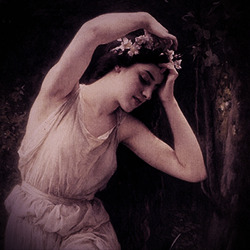


Mythology and Folklore Moodboards || Angels: Jophiel
Iofiel (“beauty of God”—Iophiel, Zophiel, Jofiel, Jophiel)—a companion angel of Metatron; a prince of the Law (Torah), usually included among the seven archangels and equated with Yefefiah (q.v.). According to Cornelius Agrippa, Iofiel is ruler of the planet Saturn, alternating with Zaphchiel (Zaphkiel).
In his doctrine of Talismans, Paracelsus cites Iofiel as the intelligence of the planet Jupiter. According to de Bles, “How to Distinguish Saints in Art”, it is Iofiel (Jophiel) who drove Adam and Eve out of Eden. This is also the view of the Rev. R. L. Gales in “The Christian Lore of Angels.” In a work called “Angels in Art” by C. E. Clement, Iofiel is cited as the preceptor angel of the sons of Noah (Shem, Ham, and Japhet).
— A Dictionary of Angels: Including the Fallen Angels, Gustav Davidson
21 notes
·
View notes
Text
just a quick guide on the importance of lmk characters to Chinses methoylogy so people know
disclaimer I'm not Chinese nor was I raised in the culture I'm just doing research so more people know.
Zhu Bajie: is an actively worshiped god (not a Buddha). is the patron deity of masseuses, hostesses, and prostitutes within Taiwan and other parts of East Asia.
Sun Wukong: is an actively worshiped trickster god and Buddha. though Buddhist monks don't generally worship him, the people of southern China, Taiwan, and areas of Southeast Asia, Malaysia, Singapore, and even Thailand and Vietnam. there is even a temple dedicated to him in America. along with the trickster aspects he is also a god of nature, god protector, patron deity of athletes (in Singapore at least), and protector of children. he is also considered a Dharmapala (guardian deity of the dharmic path dharmic path). a large part of his worship is with Spirit-mediums who "are believed to channel his spirit to interact with believers, generally answering their questions, blessing them or their belongings with paper talismans, or prescribing medicine". link to helpful if you want to learn more
Tripitaka: is actively worshipped god protector and achieved Buddhahood in the jttw. the real-life monk that he is based on is also worshiped as a god of success. though neither the character nor the real-life monk is worshiped as a Buddha in modern times.
Sha Wujing: is an arhat(a saint of one of the highest ranks.). he has links to a minor Buddhist protector deity in Japan but apart from that I can find no resources to say he is actively worshiped. please still be respectful though
Ao lie: at the end of the jttw ao lie is made a nāga are mythical creatures that are believed to be protectors of Buddhism and often represent water and abundance. not actively worshiped but still sacred.
Note: just because not all of these characters are worshiped doesn't mean they are not sacred. please please be considerate. Also, please keep in mind that all the above characters are Buddhist monks if you want to write a story about them research restrictions for Buddhist monks. this means no meals with meat, no killing (except for wukong), and no sex! you can be a little lenient for Zhu Bajie but for the other if you want to write anything including that stuff it needs to be pre-jttw. This not meant shaming anyone for writing smut or porn but please their characters their deities.
13 notes
·
View notes
Text
Godefroy Investigation Part 2: Ancient Dragon Knight Kristoff
Let's look at the actual facts regarding Godefroy the Grafted.
We find him in the Golden Lineage Evergaol on the Altus Plateau.
He took part in the First Defense of Leyndell
He was captured by Ancient Dragon Knight Kristoff.
He carries the Godfrey Icon Talisman.
He is an exact duplicate of Godrick.
That's all we know. Literally, that's it. So, I'm gonna investigate these
Evergaols are pretty self-explanatory, and I'll deal with the First Defense when I get to Godrick, so first I'll start with Kristoff. Who was he?
Well, he was a Leyndell Knight. Really, that's it. Why was he called "Ancient Dragon Knight," then? It's likely that the order changed names at some point after he was interred as Spirit Ash.
This is also suggested by the Dragon-Cult Prayerbook, which Brother Corhyn calls a heresy. The Gravel-Stone Seal has the rather dubious line:
The worship of the ancient dragons does not conflict with belief in the Erdtree. After all, this seal, and lightning itself, are both imbued with gold.
Note for later: Things that have to be insisted this strongly are probably what someone wants you to believe rather than what is actually true.
Now, Kristoff's actual description is the only text mention of Godefroy in the game:
Spirit of Kristoff, an honorable knight of Leyndell who was also a devout worshipper of the ancient dragons. His skills strike down foes with thunderbolts, the dragons' weapon of choice.
After the First Defense of Leyndell, Kristoff earned the hero's honor of Erdtree Burial for the feat of capturing Godefroy the Grafted.
Said hero's burial was in the Sainted Hero's Grave, so yeah this was a pretty big fucking deal. Going with my theory that Godefroy was memory holed, it's pretty weird that the man who captured him was given a sainted burial and the whole grave was renamed* in his honor.
He's guarded by an Ancient Hero of Zamor, who shows up as a recurring boss and a basic enemy, once in the Mountaintops of the Giants. The description of their equipment says:
These long-lived warriors, clad in biting, freezing winds, are said to have been the mortal enemies of the Fire Giants since time immemorial.
There are two others in the game, but the one that I think is important is the one on the Weeping Peninsula, trapped in his own Evergaol. That one drops Radagon's Scarseal, which states:
These seals represent the lifelong duty of those chosen by the gods.
So they're long-lived, and have a lifetime duty. Seems like an ideal tomb guardian, but that in and of itself doesn't tell us much. However, the fact one of them is found so far from home, in an area controlled by Godrick, and carrying an item sacred to Radagon (and thus the Golden Order as a whole), suggests that this might be a prisoner of war from the First Defense. So at least the losing side also took...uh...this guy!
It also suggests that the sainted hero was interred before the Zamori retreated to their Mountain and were still cooperating with the Golden Order. The one in the Sainted Hero's Grave might have even thought they were acting on Radagon's orders. To me, this indicates an attempt to maintain an illusion of normalcy in the early days of the Shattering. Most people didn't even realize something had gone horribly wrong yet.
It's likely that Kristoff's heroic actions were used as a means of legitimizing the Dragon Cult. They were tolerated before the First Defense, but afterwards, they were held up as heroes. Whoever was controlling Leyndell at the time (likely Morgott) must have desperately needed a PR win. Yet this victory was erased from history, at least the specifics were. There's no mention of who actually took part in the First Defense, unlike the Second, where Margit the Fell Omen (aka Morgott the Veiled King) is held up as the hero.
To me, that means information about who actually instigated the war must have come out later. The war went from a victory to a great shame, so the deeds of Kristoff were stricken from official records.
*(note: It seems that the Hero's Graves are fairly old and the statues that mark them show signs of defacement, so it's likely they were appropriated from a previous culture).
#godefroy the grafted#godrick the grafted#godrick the golden#morgott the omen king#morgott the grace given#the veiled king#margit the fell omen#elden ring#elden ring lore#elden lore#soulsborne#souls lore
22 notes
·
View notes